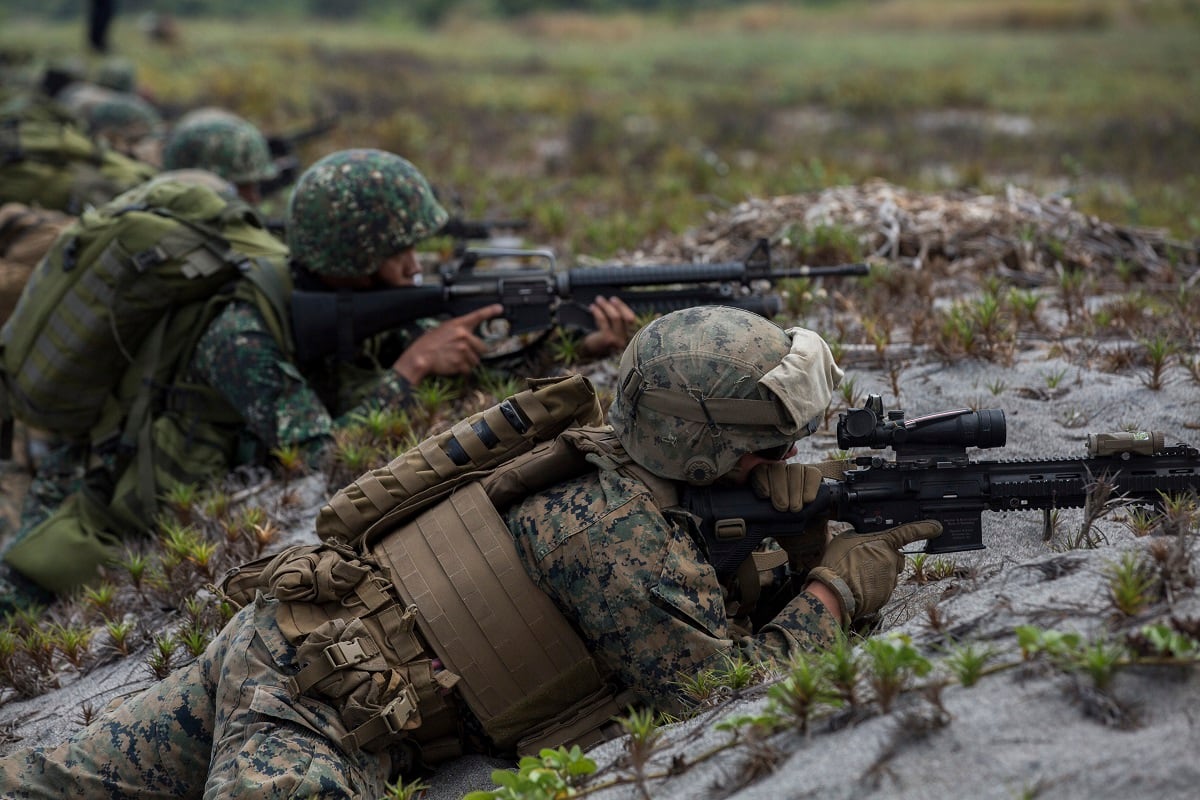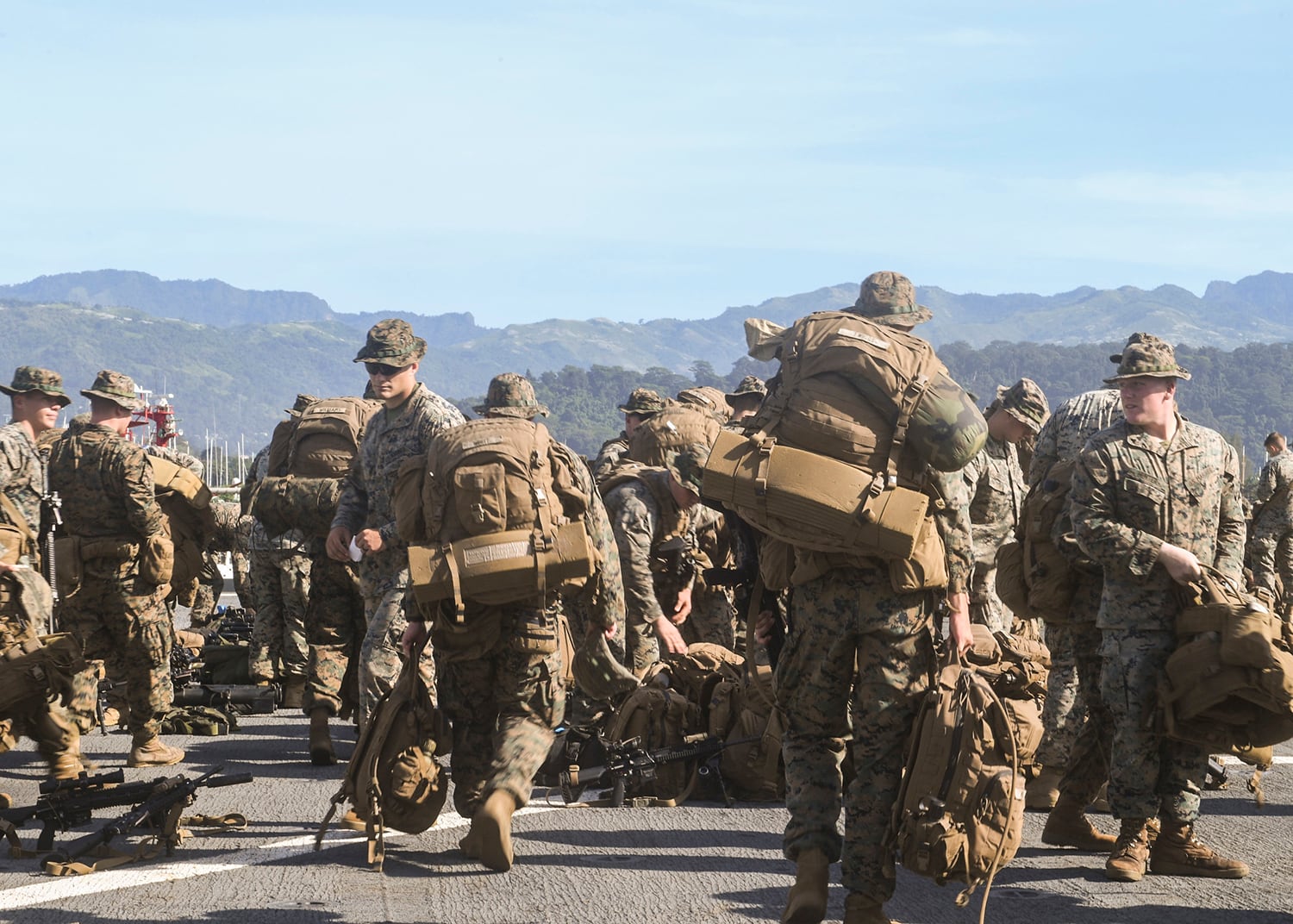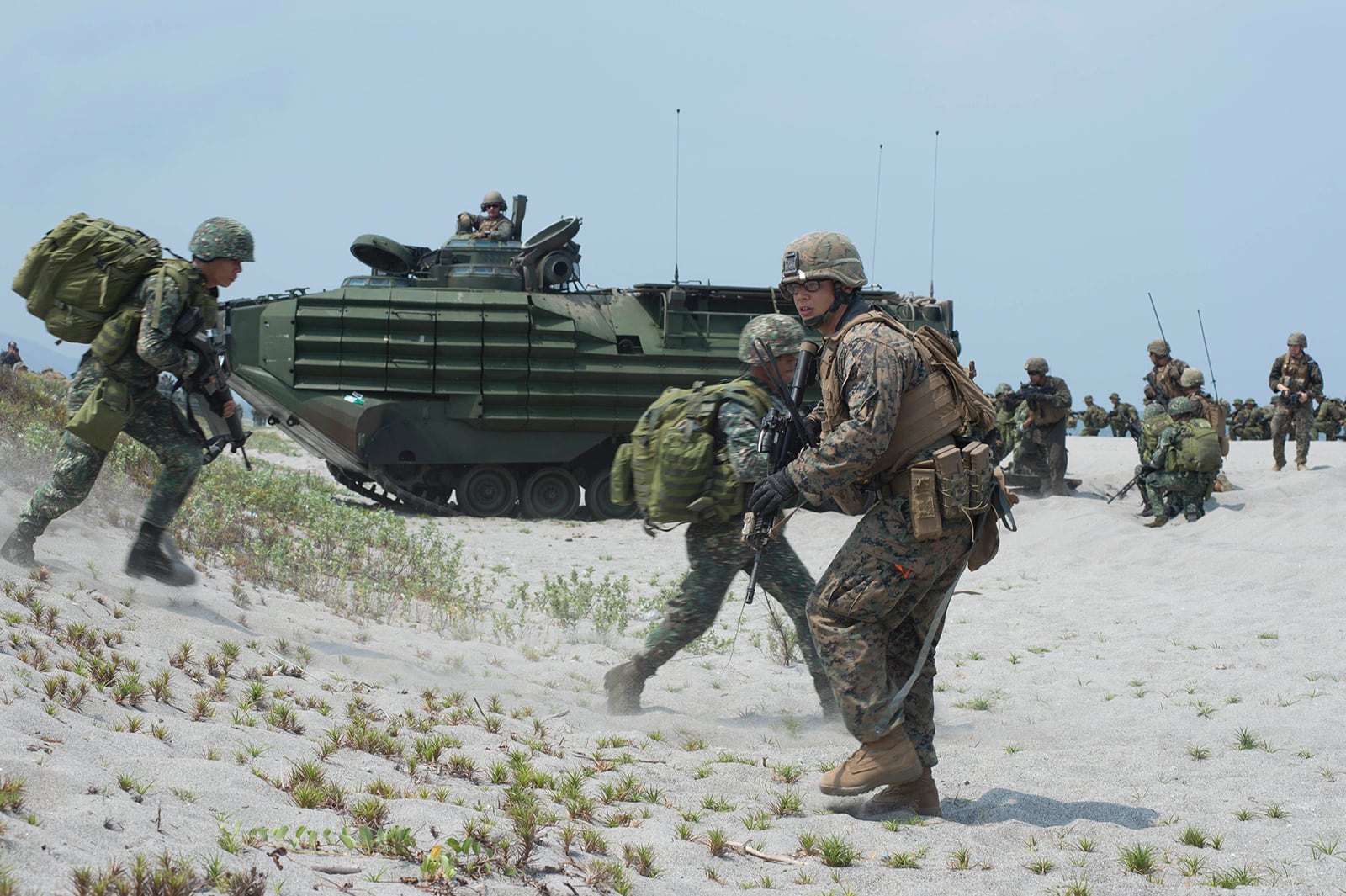SUBIC, Philippines — More than 2,000 U.S. and Philippine military personnel, along with a small contingent of Japanese forces, began annual combat exercises on Wednesday aimed at responding rapidly to crises and natural disasters and underscoring their commitment to keep the region "free and open."
The 10-day drills, which include amphibious assault and live-fire exercises, opened at Subic Freeport, a former U.S. naval base northwest of Manila. They will also include humanitarian work in six northern Philippine provinces.
RELATED

China has often branded military exercises involving the U.S. and its allies, especially in or near the disputed South China Sea, as a threat to its security interests. U.S. and Philippine officials said the exercises aim to address terrorism, security and humanitarian concerns during natural disasters.
“These activities represent an increase in military capability and a commitment to a free and open Indo-Pacific region and demonstrate the ability to forward deploy forces in the event of a crisis or natural disaster,” the U.S. Embassy in Manila said.

Philippine marines spokesman Capt. Felix Serapio said about 1,400 U.S. Marines and 600 Philippine counterparts are participating in the exercises, called “Cooperation of warriors of the sea.”
About 100 members of Japan’s Ground Self-Defense Force will participate in drills using amphibious assault vehicles and will train alongside U.S. and Philippine forces in providing humanitarian aid and disaster-response work, the American Embassy said.
RELATED

Combat exercises between the Philippines and the U.S., its longtime treaty ally, have proceeded despite threats by President Rodrigo Duterte after taking office in June 2016 to halt the drills by repealing or abrogating an agreement that allows large numbers of American forces to enter the country for joint military exercises. Duterte’s threats have largely been sparked by U.S. government criticism of widespread deaths under his crackdown on illegal drugs.
The Visiting Forces Agreement has helped the Philippines contain violent Muslim extremist militants in the country’s south and train and equip Filipino forces facing an assertive China in disputed South China Sea waters.




